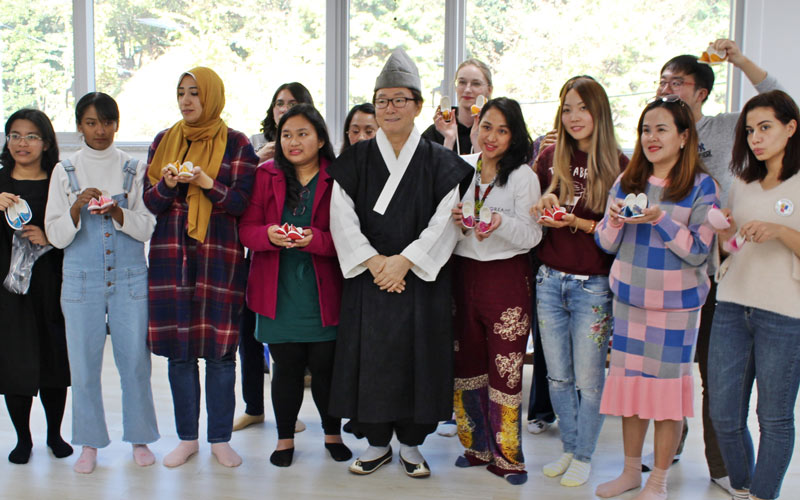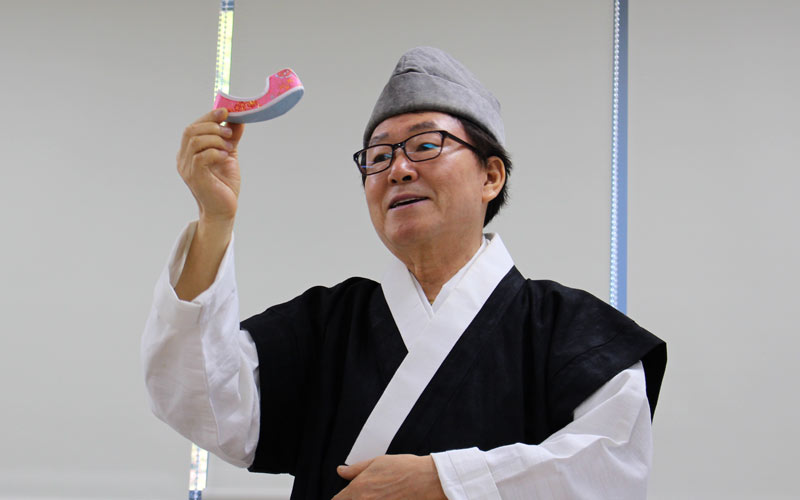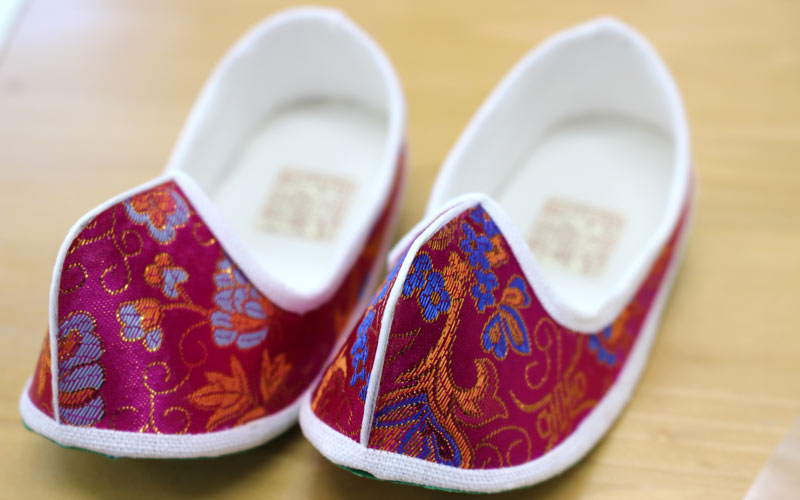View this article in another language
- 한국어
- English
- 日本語
- 中文
- العربية
- Español
- Français
- Deutsch
- Pусский
- Tiếng Việt
- Indonesian
By Honorary Reporter Sheena Solis from the Philippines
Photos= Sheena Solis

Ahn Hae-pyo teaches a hwahye class at the Intangible Cultural Heritage Holder Training Center of Busan Traditional Arts Center.
Korea.net Honorary Reporters on Nov. 15 visited the Intangible Cultural Heritage Holder Training Center of Busan Traditional Arts Center. They attend a shoemaking class taught by master shoemaker Ahn Hae-pyo, whom Korea’s Cultural Heritage Association designated Intangible Cultural Property No. 17 of Busan Metropolitan City. Carrying on his family’s legacy, he said he hopes it will continue generation after generation. His son Dong-il is the latest to continue the Ahn tradition and pursue the family's mission to make hwahye (traditional shoes) more accessible to the public.
The term hwa means "shoes over the ankle" that resemble modern boots and hye refers to "shoes that do not cover the ankle" and are like stylish flats. Thus hwahyejang refers to a maker of traditional Korean footwear, and the position is further divided into hyejang and hwajang.

Hwahyejang Ahn Hae-pyo shares the history of hwajae and the art of making traditional Korean shoes.
Hwahye has no left or right shoe, Ahn said. The upper covered part is skillfully attached to the sole. Getting the materials and making the shoes require a lot of patience, attention to detail, a fine touch and relentless effort as making one pair can take over a month. In keeping with tradition, traditional and natural materials are used like rice paste as an adhesive, and the shoes are always sewn by hand despite the availability of modern machines and technology that make the process easier and simpler.
In the Philippines, I vividly remember when I decided to donate my precious bakya (traditional wooden clogs) inherited from my grandmother to my elementary school's Tanghalan ng Sining (Cultural Arts Center), hoping that more people will appreciate the footwear and its story. In 1956, the city of Marikina in Metro Manila earned the nickname "shoe capital of the Philippines." In Liliw, known as the tsinelas (slippers) capital of Laguna province, the making of the slippers was recently incorporated into the K-12 curriculum under an ordinance passed in 2017 by the municipal government to preserve its footwear industry.
Along with my fellow Honorary Reporters, I had a great time experiencing and learning more about the beautiful craftsmanship of hwahye.

(Korea.net DB)

These customized hwahye are by Sheena Solis
*This article is written by a Korea.net Honorary Reporter. Our group of Honorary Reporters are from all around the world, and they share with Korea.net their love and passion for all things Korean.
